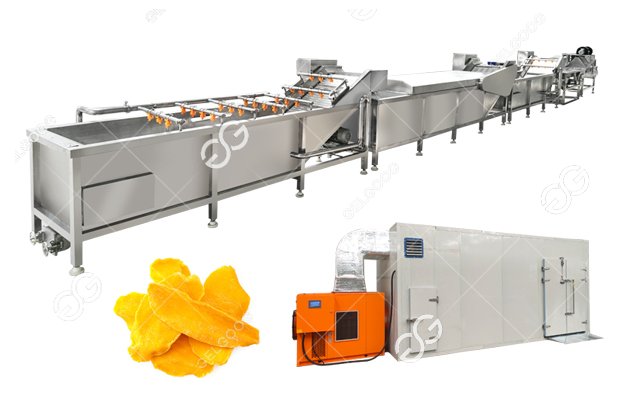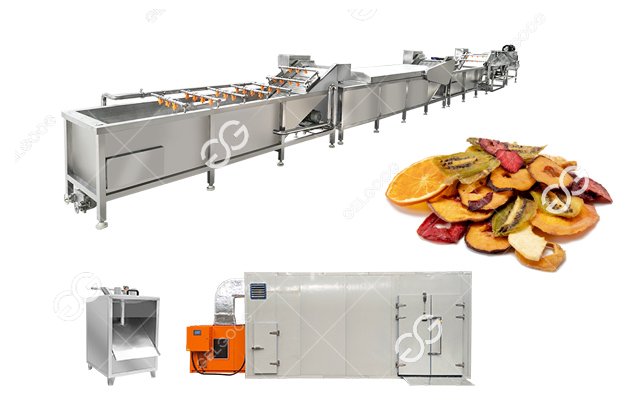Features
Industrial dried fruit production lines are equipment and systems specially designed and used for large-scale production of dried fruits. Industrial dried fruit production lines can usually be adapted to various types of fruits, such as: mango, kiwi, grapes, apples, etc.

- Raw material processing : The first step in the production line is raw material handling. Fresh fruit first needs to be washed, peeled, cored and sliced or diced for further processing.
- Pretreatment and soaking: In some cases, fruits may need to be pretreated, such as soaking in liquids containing antioxidants or anti-browning agents to prevent oxidation or pigment changes. This helps preserve the color and quality of the dried fruit.
- Drying: Drying is the core step of the production line. Industrial dried fruit production lines often include multi-layer dryers that remove moisture from the fruit through hot air or microwave radiation. Control of temperature and humidity is key to ensure that the dried fruit maintains optimal color, taste and nutritional value during the drying process.
- Cooling: After drying, the dried fruit needs to be cooled in order to quickly reduce the temperature and stabilize the quality of the product.
- Sorting and screening: Once cooling is complete, dried fruit is usually sorted and screened to remove any remaining foreign matter or substandard fruit pieces.
- Packaging: Finally, the dried fruit products are automatically packaged, usually on a packaging line. Packaging can be various types of bags, boxes or cans to ensure the shelf life and appearance of the product.
Dried fruit drying lines have many advantages in food processing and are important tools in the field of food processing, helping to extend the shelf life of fruits, reduce waste, and provide products for multiple uses. Gelgoog can customize the production of fruit and vegetable drying product line equipment, which can meet customer needs in terms of equipment size, output, working hours, and transportation.


Technical Data












